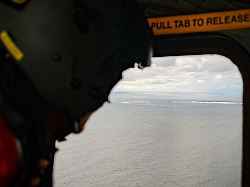Swedish Navy Chief
Full pipeline protection in the Baltic Sea ‘not possible’
10/28/2022 11:26 am
Four leaks were discovered on the Nord Stream 1 and 2 gas pipelines at the end of September. Authorities assume sabotage. From the point of view of the Swedish Navy, such attacks cannot be ruled out in the future.
Against the background of the attacks on the Nord Stream 1 and 2 gas pipelines, the head of the Swedish Navy emphasized that there is no complete protection of the critical infrastructure in the Baltic Sea. “That’s not possible,” said Ewa Skoog Haslum of the “Frankfurter Allgemeine Zeitung” when asked whether attacks on the infrastructure can be completely ruled out. “The area is too big for that.”
Naval officer Skoog Haslum said it’s not just about observing the water surface, “but also about the depth of the sea and what’s happening there. It’s often difficult for people to imagine because they don’t live in this water space.”
She compared the sea to space. “We talk a lot about it, but there are also a lot of unknowns in the water space, we have to be aware of that. The water space is maybe something like the new space,” said the Swedish Navy chief. The Nord Stream sabotage showed how important the issue is.
Not everything can be traced
According to Skoog Haslum, it cannot be ruled out that a submarine could move through the Baltic Sea unnoticed. To say anything that moves there can be tracked down is “a bit of a boast.” However, she assumes that the water space will become more and more transparent with technical developments. “So staying undetected in the future is becoming increasingly difficult.”
Four leaks were discovered in the Nord Stream 1 and 2 gas pipelines from Russia to Germany off the Danish island of Bornholm at the end of September, two in the Swedish and two in the Danish economic zone. According to an official Danish-Swedish report, the leaks were caused by violent explosions. The incident had sparked a discussion about the security of critical infrastructure.
